Julian Cope’s Album of the Month

The Godlike Genius of Pärson Sound
AOTM #118, March 2010ce
THE GODLIKE GENIUS OF PÄRSON SOUND (1966-68) was constructed by Julian Cope for the purposes of this review.
A Time of Great Ambitions
Issuing from that same great La Monte Youngian musical glacier from whose colossal base oozed the Velvets’ perpetual motion ‘Venus in Furs’, Stockholm’s six-piece Pärson Sound brought forth – between 1967-68 – a raging musical stream, nay, a torrent of huge, drawn-out, adventuresome pieces, mostly so caffeinated and belligerent, so pugilistic and so feisty that, even to we Moderns, this e. cello’n’bass-driven ensemble still has the sound of Midgardsorm – the Ouroboros , the Serpent of the World – writhing for its freedom in the great mitt of Thor. It’s the sound of confident motherfuckers, it’s the sound of a live installation not a studio: its perpetual motion rampage coulda maybe been replicated in the USA only if an avant-garde-ized Kim Fowley coulda found the time to bully the Vejtables into uniting with Friendsound in order to re-record their epic 7” ‘Shadows’ as a side-long piece (phew). But nothing else is really like it. Furthermore, the music of Pärson Sound occupies a musical topography so fucking enormous and eternal that it would be easy to believe that there was – on some lonely Zoroastrian hilltop – a black-robed sonic imam right now mixing up vats of this heathen-sounding stuff. Like the mantric music of the Dream Syndicate, these mentalmen sound as though they wuz sucked clean out of Mother Earth by some County Council gulley clearer, extracted in one swift movement, then manipulated’n’sold directly to the general public in sonic pessary form. Down our way, we call it the Crude. Like raw Krautrock, you can buy this multi-purpose Scando-Germanic stuff in large sealed jars from Lidl, spooning out just a few tablespoonfuls every time you wanna exercise, seek enlightenment or simply knob your tart. It’s eternal like SCHWINGUNGEN-period Ash Ra Tempel or the eerie canals of Beefheart’s endless STRICTLY CONFIDENTIAL; it’s eternal like every early Amon Düül 2 extended piece, as seemingly endless as the Arabian caravan underlying Can’s ‘You Doo Right’; it even approaches the 22-minute totality of Agitation Free’s perfectly LaMontean ‘Looping’. A music rendered only & always in Cinemascope, these edgy Mu-Sicians were saving their own lives when they played together. Somewhat incredibly, however, Pärson Sound’s singular genius remained unknown to the Rock Listener until 2001CE, when their first EVER release – a huge self-titled pop-art clad double-CD masterpiece – knocked everyone at Head Heritage for six and had our Unsung forums buzzing for months of eulogies and where-they-been-all-our-lives questionings. During that period, Pärson Sound so descended into the group consciousness of everybody here, that I missed the chance to write them a timely Album of the Month, or risk being perceived as a Tony Come Hateley. That a Sound so great as the Pärson had never been committed to vinyl seemed downright impossible, yet it was true. These druids had never once glimpsed the inside of a record company, nor even made the attempt in their entire ‘careers’, inhabiting instead the world of art galleries and art museums; a Revox 30ips hi-fi world in which reel-to-reel tapes of the band swapped hands, as patrons commissioned yet another 20-minute-plus piece to illustrate yet another art exhibition. Like Tokyo’s conservatory-based Taj Mahal Travellers and the sheltered-by-Andy early days of the Velvet Underground, Pärson Sound operated so far outside the orbit of da music biz that they were ever free, free to expand musically AND spiritually way beyond any bands with even remote commercial expectations simply because they never interfaced with greedhead kapitalist cunts at any level. Hammond organist Torbjörn Abelli even jettisoned his own instrument on joining forces with Bo Anders Persson, instead choosing to play the latter’s Hofner bass in this strange ‘continuous seminar’, as he would later describe the band. Moreover, how forcefully Abelli emphasises the Utopian attitudes of ALL the band members with this comment:
“And so came a time of great ambitions: More and more, people came to realise that the new world order had to come. There were several opinions on what it would look like, from militant Marxist to more blackredgreen anarchist … And how could one find a music with potential to transform the sense, a music that could make way for the new world order? Pärson Sound were born out of these crossings and tensions.”
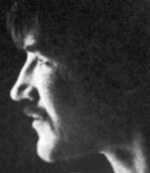
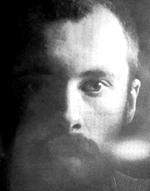
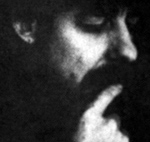
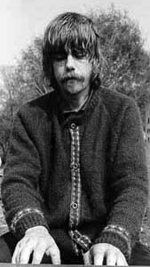
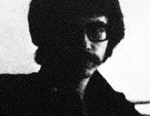 As evidenced by events described in my DANSKROCKSAMPLER (Album of the Month #49, June 2004), Scandinavia’s Cultural Revolution was, throughout the 1960s, rising at a steep trajectory that plateau’d in Summer ’67 with the highly controversial release of Swedish film director Vilgot Sjöman’s movie JAG ÄR NYFIKEN – GUL (I AM CURIOUS – YELLOW). However, while the ‘crossings and tensions’ that Abelli describes above may arguably be named as the elemental swamp that ‘Pärson Sound were born out of’, the band’s formation actually occurred for a far more prosaic – though still highly artistic – reason. For it was the arrival in Stockholm, in February 1967, of American avant-garde minimalist composer Terry Riley that caused Pärson Sound to be formed. Working on a small budget, desperate to save money and searching for a European ensemble capable of playing his newly famous ‘In C’, Riley commissioned his Stockholm-based former student Bo Anders Persson to put together a quintet ready for his arrival. A series of truly inspired musicians were then hired by Persson to create an ensemble that delighted both Riley AND the musicians themselves, each of whom immediately recognised the possibilities that this line-up could achieve. All in their early 20s – and each between five-to-ten years younger than their guitarist band leader – the new members added a raging rock’n’roll youth spirit that turbo-charged the tumbling mantric monotony envisaged by Terry Riley for ‘In C’ and presented huge possibilities to the rhythm-obsessed Bo Anders Persson himself. Indeed, rhythm was entirely the key to Persson’s dreams and plans for this heady ensemble. With the aforementioned Torbjörn Abelli now playing bass, Persson further reinforced those rhythmical lower reaches with the addition of electric cellist Arne Ericsson, a fellow student at the Royal College of Music, whose churning & sawing rhythms blunted the attack of the lower register into an almost proto-Sabbath monotony; a seminary Troggs. On drums, Thomas Mera Gartz was a wildman, displaying in his freerock blitz both a relentlessness AND a jazzy lightness of touch similar to that provided by Danny ‘D. Secundus’ Fischelser in his work with Popol Vuh and Amon Düül 2, whilst – on the heaviest of jams – an equally Amon Düül 2-style twin drummer set-up was adopted with guests Bengt Berger or Björn Fredholm. The band’s upper registers were taken care of by the organ, guitar, FX and flute of Persson himself and by poet/vocalist Thomas Tidholm, whose mid-60s travels throughout the American W. Coast would lend a psychedelic ‘authenticity’ to these Scandos-at-the-edge-of-W. Culture. Aping Charlie Parker and Ornette Coleman, Tidholm also took up plastic soprano sax on joining the ensemble, but it was Tidholm’s nomadic spirit and ‘anarchistic personage’ that would make him the band’s totem; their Bruce Palmer if you will. Struggling to find a catchy pop-art moniker for this kinetic band, Persson then racked him brains until he … gave up! In the end, Persson just Anglicized his own surname in an effort to appear more Western, and Pärson Sound was born. Yup, that’s what passed for a pop-art moniker in crazy old 60s Sverige!
As evidenced by events described in my DANSKROCKSAMPLER (Album of the Month #49, June 2004), Scandinavia’s Cultural Revolution was, throughout the 1960s, rising at a steep trajectory that plateau’d in Summer ’67 with the highly controversial release of Swedish film director Vilgot Sjöman’s movie JAG ÄR NYFIKEN – GUL (I AM CURIOUS – YELLOW). However, while the ‘crossings and tensions’ that Abelli describes above may arguably be named as the elemental swamp that ‘Pärson Sound were born out of’, the band’s formation actually occurred for a far more prosaic – though still highly artistic – reason. For it was the arrival in Stockholm, in February 1967, of American avant-garde minimalist composer Terry Riley that caused Pärson Sound to be formed. Working on a small budget, desperate to save money and searching for a European ensemble capable of playing his newly famous ‘In C’, Riley commissioned his Stockholm-based former student Bo Anders Persson to put together a quintet ready for his arrival. A series of truly inspired musicians were then hired by Persson to create an ensemble that delighted both Riley AND the musicians themselves, each of whom immediately recognised the possibilities that this line-up could achieve. All in their early 20s – and each between five-to-ten years younger than their guitarist band leader – the new members added a raging rock’n’roll youth spirit that turbo-charged the tumbling mantric monotony envisaged by Terry Riley for ‘In C’ and presented huge possibilities to the rhythm-obsessed Bo Anders Persson himself. Indeed, rhythm was entirely the key to Persson’s dreams and plans for this heady ensemble. With the aforementioned Torbjörn Abelli now playing bass, Persson further reinforced those rhythmical lower reaches with the addition of electric cellist Arne Ericsson, a fellow student at the Royal College of Music, whose churning & sawing rhythms blunted the attack of the lower register into an almost proto-Sabbath monotony; a seminary Troggs. On drums, Thomas Mera Gartz was a wildman, displaying in his freerock blitz both a relentlessness AND a jazzy lightness of touch similar to that provided by Danny ‘D. Secundus’ Fischelser in his work with Popol Vuh and Amon Düül 2, whilst – on the heaviest of jams – an equally Amon Düül 2-style twin drummer set-up was adopted with guests Bengt Berger or Björn Fredholm. The band’s upper registers were taken care of by the organ, guitar, FX and flute of Persson himself and by poet/vocalist Thomas Tidholm, whose mid-60s travels throughout the American W. Coast would lend a psychedelic ‘authenticity’ to these Scandos-at-the-edge-of-W. Culture. Aping Charlie Parker and Ornette Coleman, Tidholm also took up plastic soprano sax on joining the ensemble, but it was Tidholm’s nomadic spirit and ‘anarchistic personage’ that would make him the band’s totem; their Bruce Palmer if you will. Struggling to find a catchy pop-art moniker for this kinetic band, Persson then racked him brains until he … gave up! In the end, Persson just Anglicized his own surname in an effort to appear more Western, and Pärson Sound was born. Yup, that’s what passed for a pop-art moniker in crazy old 60s Sverige!
Anyway, while I’ll admit that the four songs I’m presenting y’all in this Album of the Month reveal Pärson Sound at their most distilled, this is only because I felt a duty to sweeten their pill by consciously excluding all the rehearsal tapes and solo Bo Anders Persson tracks from the original double-CD. That’s because I’m on two missions here: 1) to raise the consciousness of all who encounter this series of Album of the Months, and 2) to raise the profile of this criminally undervalued band in a manner that befits their genius (so the false starts and Persson’s solo wa-mouth vocal gymnastics will have to wait until you’re all aboard their trip). On both counts, these four epic tracks – ‘India’, ‘Skrubba’, ‘Tio Minuter’ and ‘From Tunis to India in Fullmoon’ – will widen your horizons considerably, and have you all wondering why on earth this incredible ensemble failed during their own lifespan to make even one genuinely contemporary Pärson Sound vinyl document forthcoming. And, afore I quit y’all, a word to all you young kiddies who missed out nine years ago, please do keep remembering that this music was mostly recorded two full years ahead of the Krautrock bands’ experiments, Pärson Sound having been kick-started by the arrival of Terry Riley – one of the True Masters. Playing this extraordinary music recently for my Krautrock-obsessed daughter Albany, I was both shocked & distressed to remember that I’d never yet got around to writing about these gentlemen: multiple emails between myself, Holy McGrail and the Seth Man back in the day, but no review forthcoming. Fuck. Still, love is more than words … or better late than never, as Arthurly would have said. So if ya dug Pärson Sound then, re-dig them now! And if this is all new to ya, then – dammit – I’m jealous!
- India (13.06)
- Skrubba (28.57)
- Tio Minuter (10.30)
- From Tunis to India in Fullmoon (20.57)
A Time of Great Ambitions
Issuing from that same great La Monte Youngian musical glacier from whose colossal base oozed the Velvets’ perpetual motion ‘Venus in Furs’, Stockholm’s six-piece Pärson Sound brought forth – between 1967-68 – a raging musical stream, nay, a torrent of huge, drawn-out, adventuresome pieces, mostly so caffeinated and belligerent, so pugilistic and so feisty that, even to we Moderns, this e. cello’n’bass-driven ensemble still has the sound of Midgardsorm – the Ouroboros , the Serpent of the World – writhing for its freedom in the great mitt of Thor. It’s the sound of confident motherfuckers, it’s the sound of a live installation not a studio: its perpetual motion rampage coulda maybe been replicated in the USA only if an avant-garde-ized Kim Fowley coulda found the time to bully the Vejtables into uniting with Friendsound in order to re-record their epic 7” ‘Shadows’ as a side-long piece (phew). But nothing else is really like it. Furthermore, the music of Pärson Sound occupies a musical topography so fucking enormous and eternal that it would be easy to believe that there was – on some lonely Zoroastrian hilltop – a black-robed sonic imam right now mixing up vats of this heathen-sounding stuff. Like the mantric music of the Dream Syndicate, these mentalmen sound as though they wuz sucked clean out of Mother Earth by some County Council gulley clearer, extracted in one swift movement, then manipulated’n’sold directly to the general public in sonic pessary form. Down our way, we call it the Crude. Like raw Krautrock, you can buy this multi-purpose Scando-Germanic stuff in large sealed jars from Lidl, spooning out just a few tablespoonfuls every time you wanna exercise, seek enlightenment or simply knob your tart. It’s eternal like SCHWINGUNGEN-period Ash Ra Tempel or the eerie canals of Beefheart’s endless STRICTLY CONFIDENTIAL; it’s eternal like every early Amon Düül 2 extended piece, as seemingly endless as the Arabian caravan underlying Can’s ‘You Doo Right’; it even approaches the 22-minute totality of Agitation Free’s perfectly LaMontean ‘Looping’. A music rendered only & always in Cinemascope, these edgy Mu-Sicians were saving their own lives when they played together. Somewhat incredibly, however, Pärson Sound’s singular genius remained unknown to the Rock Listener until 2001CE, when their first EVER release – a huge self-titled pop-art clad double-CD masterpiece – knocked everyone at Head Heritage for six and had our Unsung forums buzzing for months of eulogies and where-they-been-all-our-lives questionings. During that period, Pärson Sound so descended into the group consciousness of everybody here, that I missed the chance to write them a timely Album of the Month, or risk being perceived as a Tony Come Hateley. That a Sound so great as the Pärson had never been committed to vinyl seemed downright impossible, yet it was true. These druids had never once glimpsed the inside of a record company, nor even made the attempt in their entire ‘careers’, inhabiting instead the world of art galleries and art museums; a Revox 30ips hi-fi world in which reel-to-reel tapes of the band swapped hands, as patrons commissioned yet another 20-minute-plus piece to illustrate yet another art exhibition. Like Tokyo’s conservatory-based Taj Mahal Travellers and the sheltered-by-Andy early days of the Velvet Underground, Pärson Sound operated so far outside the orbit of da music biz that they were ever free, free to expand musically AND spiritually way beyond any bands with even remote commercial expectations simply because they never interfaced with greedhead kapitalist cunts at any level. Hammond organist Torbjörn Abelli even jettisoned his own instrument on joining forces with Bo Anders Persson, instead choosing to play the latter’s Hofner bass in this strange ‘continuous seminar’, as he would later describe the band. Moreover, how forcefully Abelli emphasises the Utopian attitudes of ALL the band members with this comment:
“And so came a time of great ambitions: More and more, people came to realise that the new world order had to come. There were several opinions on what it would look like, from militant Marxist to more blackredgreen anarchist … And how could one find a music with potential to transform the sense, a music that could make way for the new world order? Pärson Sound were born out of these crossings and tensions.”

Bo Anders Persson

Thomas Mera Gartz

Thomas Tidholm

Arne Ericsson

Torbjorn Abelli
Anyway, while I’ll admit that the four songs I’m presenting y’all in this Album of the Month reveal Pärson Sound at their most distilled, this is only because I felt a duty to sweeten their pill by consciously excluding all the rehearsal tapes and solo Bo Anders Persson tracks from the original double-CD. That’s because I’m on two missions here: 1) to raise the consciousness of all who encounter this series of Album of the Months, and 2) to raise the profile of this criminally undervalued band in a manner that befits their genius (so the false starts and Persson’s solo wa-mouth vocal gymnastics will have to wait until you’re all aboard their trip). On both counts, these four epic tracks – ‘India’, ‘Skrubba’, ‘Tio Minuter’ and ‘From Tunis to India in Fullmoon’ – will widen your horizons considerably, and have you all wondering why on earth this incredible ensemble failed during their own lifespan to make even one genuinely contemporary Pärson Sound vinyl document forthcoming. And, afore I quit y’all, a word to all you young kiddies who missed out nine years ago, please do keep remembering that this music was mostly recorded two full years ahead of the Krautrock bands’ experiments, Pärson Sound having been kick-started by the arrival of Terry Riley – one of the True Masters. Playing this extraordinary music recently for my Krautrock-obsessed daughter Albany, I was both shocked & distressed to remember that I’d never yet got around to writing about these gentlemen: multiple emails between myself, Holy McGrail and the Seth Man back in the day, but no review forthcoming. Fuck. Still, love is more than words … or better late than never, as Arthurly would have said. So if ya dug Pärson Sound then, re-dig them now! And if this is all new to ya, then – dammit – I’m jealous!

 Early Soft Machine (1966-68)
Early Soft Machine (1966-68) 5-Track
5-Track The Godlike Genius of Pärson Sound
The Godlike Genius of Pärson Sound Psychick TV
Psychick TV Postpunk sampler 2
Postpunk sampler 2 Postpunk sampler
Postpunk sampler DETROITROCK SAMPLER
DETROITROCK SAMPLER HARDROCK SAMPLER
HARDROCK SAMPLER Li Jianhong
Li Jianhong The Routes
The Routes Chairmen Of The Board
Chairmen Of The Board Evil Acidhead
Evil Acidhead Henry Wolff & Nancy Hennings
Henry Wolff & Nancy Hennings Silver Apples
Silver Apples OMD
OMD XTC
XTC Fleetwood Mac
Fleetwood Mac Fleetwood Mac
Fleetwood Mac Van Morrison
Van Morrison Vsevelodon the Bigot Nest (Vsevelod and the Big Nest)
Vsevelodon the Bigot Nest (Vsevelod and the Big Nest)